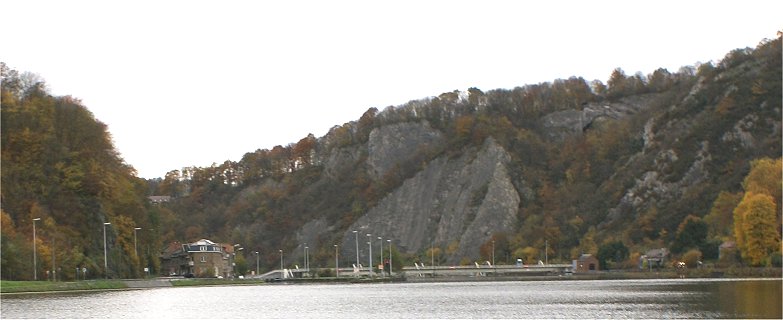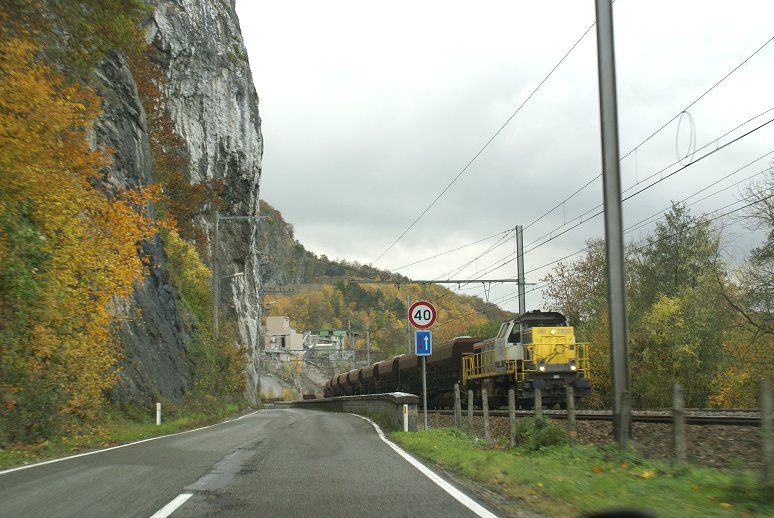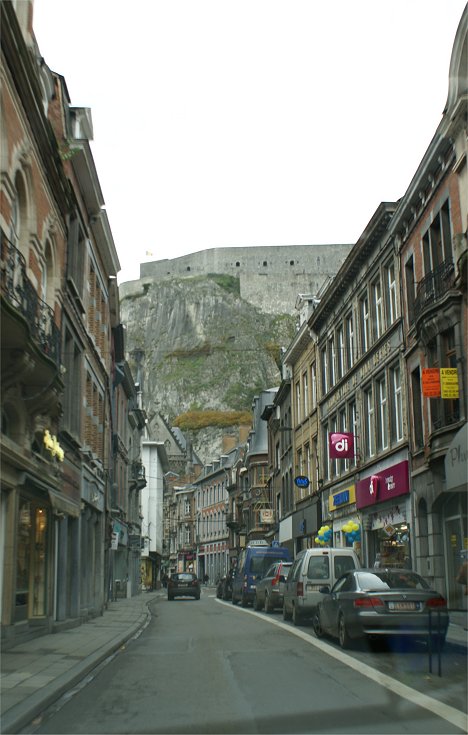At Yvoir, on the right side of the panorama, there is a bridge. This is approximate the site of the wartime bridge. The stonework on the far bank next to the stone building appears to be Belgian defenses. On the afternoon of May 12th, the last of the French cavalry crossed the bridge to the safety of the west bank. The Germans were following closely in the hope of capturing the bridge intact. German armored cars tried to cross the bridge, but both were knocked out on the bridge by a 47mm anti-tank gun, blocking the way. The head of the Belgian engineers, Lt. Wispelaere activated the plunger to blow the explosives on the bridge. It didn't work. Using the manual backup, he blew the bridge but was killed by German fire as he did so. The first German attempt at crossing had been foiled, but more troops were approaching the river further south.











